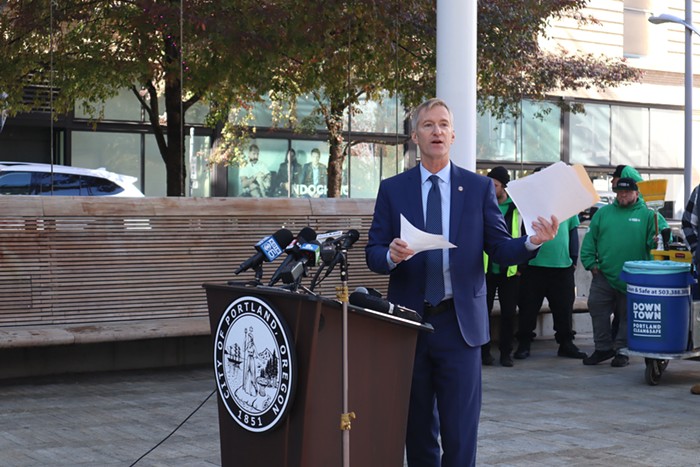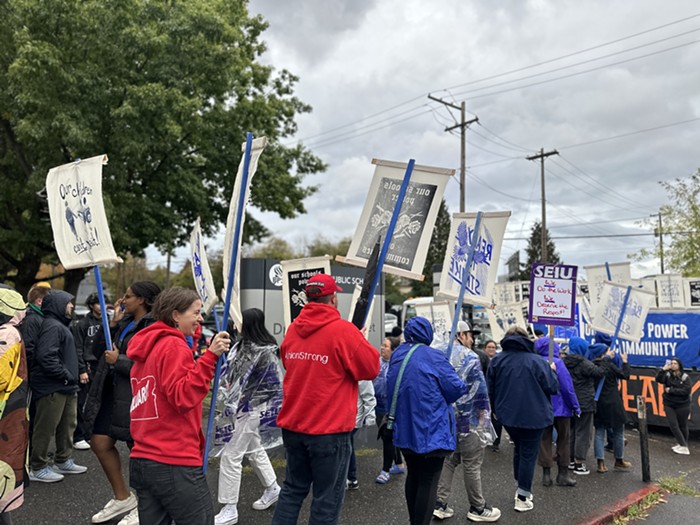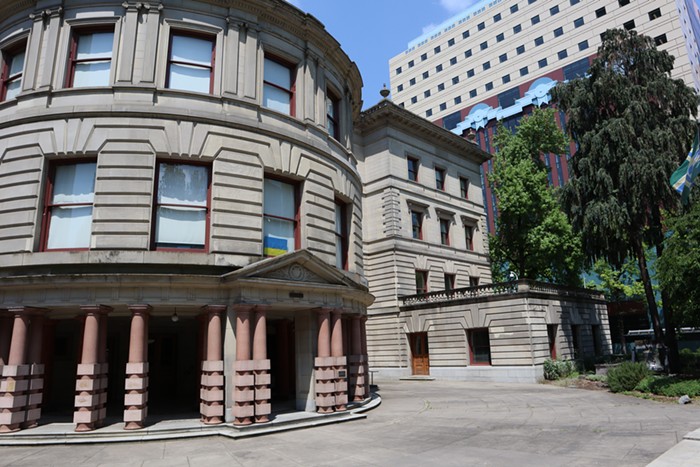Considering the housing crisis plaguing Portland and Oregon at large, figuring out ways to increase housing supply has been a top priority for city and state elected officials across the political spectrum. But so far, most of the initiatives meant to boost housing production have been focused on building new units from scratch. Portland’s advocates for historic building preservation want that to change.
Members of Portland’s Historic Landmarks Commission (HLC) say solutions to the city’s housing woes won’t come from being bullish on new construction. No need to reinvent the wheel, they say— Portland has plenty of existing buildings primed for rehabilitation, and giving those structures a new life is the best way to expedite housing production in a climate-friendly way while maintaining the city’s character.
“We wring our hands over housing shortages and how to revive downtown and lower carbon emissions, yet fail to recognize a big part of the solution is literally right in front of us,” Peggy Moretti, a member of the Historic Landmarks Commission, told City Council at a meeting on March 13. “Our largest renewable resource is our existing buildings.”
The HLC came to City Council alongside Portland’s Design Commission to give their annual “state of the city” reports. Both groups hammered home the message that Portland’s urban design is integral to the city’s success, and asked the city to invest more in a fully-supported development services program.
While building preservationists have sometimes been known for demonstrating a strain of anti-housing NIMBYism, the HLC’s message was intent on showing that housing construction doesn’t have to be at odds with maintaining historic properties and neighborhood character.
Given the state of the housing crisis (not to mention the possibly-impending Cascadia Subduction Zone earthquake), however, other housing advocates are hesitant to embrace the preservationist viewpoint to this extent. And while rehabilitating old buildings instead of building new housing may have some environmental benefits, climate and development experts are mixed on if it’s always the most efficient approach. But for those inclined toward preservationism, the cultural history is worth considering, too.
Is the future of housing in the past?
If redeveloping historic buildings is so great, why isn’t everyone doing it? According to members of the HLC, it all comes down to money. In Portland, it’s often much cheaper for developers to just construct a building from scratch.
At the March 13 City Council meeting, advocates for the rehabilitation approach to housing development asked city officials to support a state-level tax credit, which would incentivize the expensive endeavor.
Right now, Oregon developers interested in preserving and renovating historic buildings can tap into a 20 percent federal tax credit, but advocates say it’s limited in scope and insufficient to cover the prohibitive costs of rehabilitating existing properties. Advocates point to the 39 other states with similar programs, which give Oregon a roadmap to follow.
Members of City Council showed an interest in investing in a tax credit program.
“I was kind of shocked to see that I think there are [so many] states that have already figured this out,” Commissioner Dan Ryan said at the meeting. “Adoption of the [rehabilitation] tax credit would really be a big win for Portland and for the entire state.”
Last year, Northeast Portland’s Anna Mann House was reborn as a 128-unit affordable housing development, partially funded by the Portland Housing Bond. The Anna Mann House, located in the Kerns neighborhood, was built in 1919 as a home for the elderly, and the building is located on the National Register of Historic Places. Innovative Housing, Inc (IHI), the development company in charge of the Anna Mann project, has rehabilitated several other historic Portland buildings into affordable housing complexes, including the Lyndon Musolf Manor and Modern Rich Apartments in Old Town.
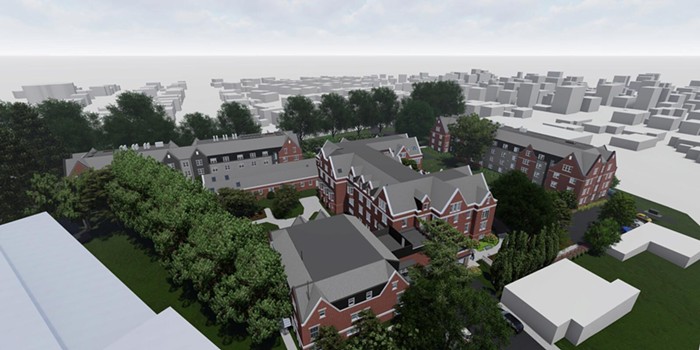
According to IHI’s website, their developments retain much of the external and internal structure of the property, but include some major upgrades: Notably, energy efficient heating and cooling systems and improved seismic resilience, both of which are crucial for any new housing complex in Portland.
Moretti and others on the HLC say it’s more sustainable to retrofit rather than rebuild housing due to the “embodied carbon in existing city assets”— that is, all the carbon emissions from building the property in the first place. However, many old buildings were not built with energy efficiency in mind, and without a costly retrofit, the properties will continue to be climate liabilities.
That’s where the Commission wants the Portland Clean Energy Community Benefits Fund (PCEF) to come in. During the March 13 City Council meeting, advocates asked commissioners to encourage PCEF to dedicate money to the historic property rehab initiative.
“We urge City Council to prioritize retrofitting existing assets rather than investing in new construction whenever possible,” reads a slide in the HLC’s City Council presentation. “With so few financial incentives available for the rehabilitation of existing buildings, pairing PCEF dollars with the Commission’s desire to see existing buildings preserved and reused presents a unique opportunity to invest in our city’s existing built infrastructure.”
The PCEF dollars would “improve thermal performance, upgrade lighting, modernize mechanical systems, and incorporate renewable energy sources,” all of which will reduce a building’s carbon footprint.
Some housing advocates, however, aren’t so sure.
Though tax rebates and PCEF money may help, it still might be unreasonably expensive to retrofit older buildings to meet today’s standards for energy efficiency and seismic resilience. These high costs are why developers haven’t jumped at the opportunity to retrofit office buildings into housing complexes, despite increasingly vacant commercial spaces in Portland’s Central City since the pandemic.
“I’m a little skeptical of the idea that we should always be preserving buildings for environmental reasons, or that old buildings are inherently better somehow,” Michael Andersen, a Portland-based housing policy researcher for the Sightline Institute, told the Mercury. Andersen added that he’s more supportive of public spending on the rehab initiative given the emphasis on seismic and energy efficiency retrofits, but still thinks it’s not always the right approach.
“I think it’s usually easier to build new buildings… but it’s not always clear cut. The historic preservationists would like you to believe it’s always clear that the old building represents so much in biocarbon that no matter how leaky it is, it’s always better to keep the old thing. Often that’s not the case, and sometimes it is,” Andersen said. “For almost all buildings, the vast majority of their life cycle energy use is in heating and cooling, not in the construction materials or construction process.”
The value of cultural history
Preserving old buildings isn’t just about carbon emissions or cost savings. Advocates for old building retrofits see a priceless value in maintaining the buildings that have built Portland’s distinct character over the years.
Later in the City Council meeting, HLC Vice-Chair Kimberly Stowers Moreland highlighted three properties that made it on the National Register of Historic Places last year: The Dr. John D. Marshall Building, the Jim Pepper House, and the Beatrice Morrow and Edward Cannady House. All three of these sites are affiliated with people of color in Portland who made significant, unsung cultural contributions to the city.
Dr. John D. Marshall was one of the only Black physicians working in Portland immediately after World War II, and his former office on North Williams Avenue was also used by the local Black Panther Party. Jim Pepper, an Indigenous jazz artist of Kaw and Muscogee Creek heritage, grew up in a now-historically recognized home in the Parkrose neighborhood. And Beatrice Morrow, who lived in a Northeast Portland home, was a civil rights activist who fought against Oregon’s Black exclusion laws, published The Advocate newspaper with her husband as a source covering local Black issues, and was the first Black woman in Oregon to receive a law degree.
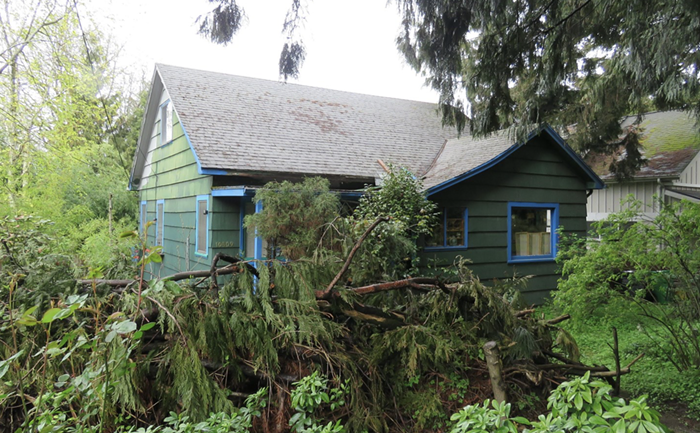
Moreland said the addition of these three properties to the historic register indicates a “new movement to be more inclusive [of underrepresented communities] by expanding the definition of preservation to include cultural history and heritage as well.”
Portland City Council members agreed with their assessment.
“I think it's really great that as we talk about historic preservation, we're not always focused on the grand buildings that represented the establishment of 100 years ago,” Commissioner Mingus Mapps said at the meeting. “Preserving the spaces of everyday Portlanders who did remarkable things to basically make this town the way it is is really important.”


